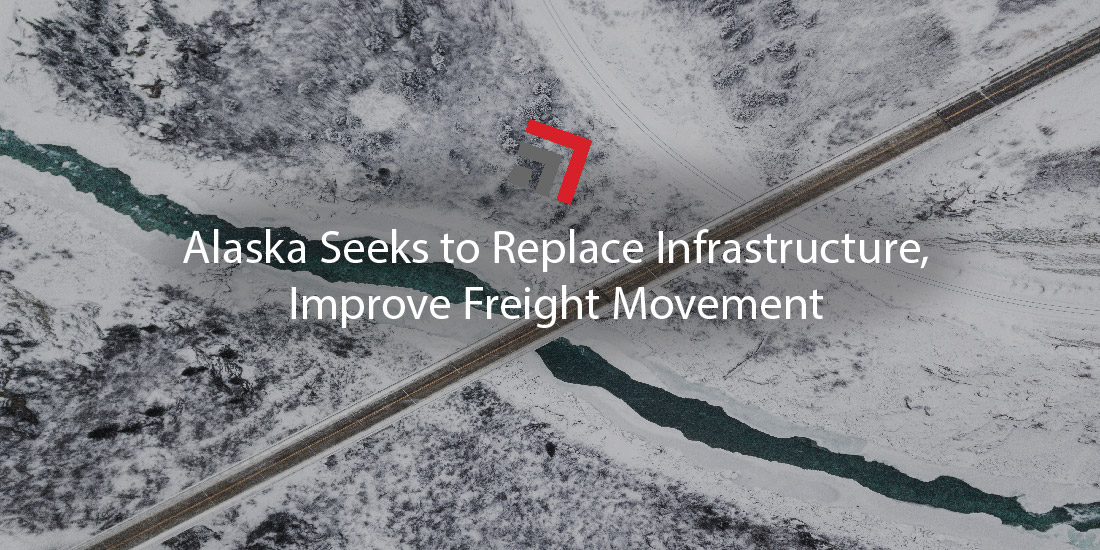Alaska’s bizarre location—a semi exclave thousands of miles north of the U.S. mainland—renders it uniquely isolated from the typical flow of America’s supply chain.
Aside from geographical solitude, “The Last Frontier” state dons a relatively simple highway system to cover the state’s massive expanse of territory. Often times, only one route connects “point A” to “point B”. The country’s largest state (by size) only has four main interstates with nearly 90 percent of its state-owned roads classified as rural.
Freight transportation across Alaska is not a moot point, however. Despite the state’s limited road network pairing with its colossal size, nearly 50 percent of the Alaskan economy depends on the movement of freight over long-distance supply chains.
A proposed $117 million package to improve freight movement
So, when your infrastructure is headlined with only four main interstates, you best be sure all components to this relatively minimal setup are safe and efficient.
In a move demonstrating Alaska’s desire to maintain and improve its infrastructure, the state’s governor, Mike Dunleavy, has proposed a $117 million package of budget amendments aimed at replacing five aging bridges in the state.
Introduced to state legislature last Wednesday, the funding would construct new bridges that would significantly improve freight movement along Alaska’s highways. If approved, the funds would be included in the state’s 2024 budget.
The Last Frontier looks to move on from WWII-era infrastructure
Alaska’s road network can best be described as rustic. Freight haulers are often challenged by the crippling conditions of these aging bridges while traveling to and from Canada or between the Port of Valdez (near Anchorage, AK) and the North Slope (northernmost part of Alaska).
New bridges would mean upgrades to current structural (and seismic) standards of these older crossways, including bridge railings designed for modern vehicles and highway speeds. The new ones will be built with a design life of 75 years—a little less than the average American life expectancy. Not too shabby!
Transport Topics reached out to Ryan Anderson, commissioner of the state’s Department of Transportation and Public Facilities. Anderson notes that bridge infrastructure on Alaska’s highway system can date back to World War II (1940s) in some cases. He went on to say, “We have a great opportunity to replace aging assets, improve safety, and ensure economic vitality to Alaska’s interior.”
While the near 80 years of service these bridges put in is commendable, the urgency to install up-to-date infrastructure is apparent. On a primary cross-border route to and from Canada and Alaska, three bridges—all river crossings—are deemed functionally obsolete. Two of the bridges, Robertson and Gerstle, date all the way back to 1944 and are considerably below modern-day standards.
However, if everything goes to plan, the replacement bridges will ease the burdens freight haulers have been dealt when negotiating the out-of-date infrastructure, such as load restrictions and deteriorating road quality.
All in all, here’s a brief rundown of what the state hopes to accomplish with the funding:
- Replace the three bridges that cross the Robertson, Gerstle, and Johnson rivers, respectively, with newer bridges that eliminate load restrictions and extend the roadway’s service life.
- A new bridge on the Richardson Highway that would eliminate the need for a current bypass route for heavy loads on this crucial interstate lane connecting Alaska’s inland points to the Port of Valdez as well as Canadian origins and destinations.
- A new bridge along the Steese Highway and undercrossing at Chena Hot Springs Road to replace a current 45-year-old bridge and, in return, eliminate load restrictions while improving roadside hardware and drainage.
Final Thoughts
Despite a simple network, over 5,600 miles of highway runs across the expansive state of Alaska. The state, known for its undisturbed wilderness, has many geographical features that limit how many roadways can be built. That said, it’s no surprise Alaska only has several freight routes it can depend on.
The state maintaining and improving its infrastructure is critical to ensuring its necessary long-haul supply chain processes are setup for long-term success.
Please contact us if you have any questions regarding this topic or any others in domestic logistics. In addition, stay up to date with weekly headlines from both trucking and rail via our Road Map newsletter.



Recent Comments